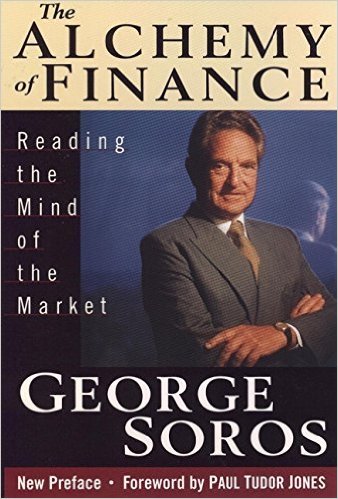In 1986, George Soros wrote a very challenging book that outlined his approach to investment management – an approach that had provided investors in his Quantum Fund extraordinary returns over the 18 prior years.
The book was challenging in two senses. For one thing, it claimed that financial orthodoxy (as still taught) rests on false premises, and for another, it argued that the philosophical underpinnings of the success of the scientific method could be used to illuminate “historical processes,” of which the financial markets are a minor subset.
Soros continued to employ his approach very successfully as an investor for another 10 years before becoming a philanthropist and statesman.
“The Alchemy of Finance” is a difficult read, but deeply rewarding for those of a curious and skeptical mind.
Economics and finance over the past 60 years has increasingly relied on analogy with hard sciences like physics. Increasingly mathematical and predicated on the assumption that there is some underlying “truth” (like E=MC squared), economists seek equilibrium and financial analysts seek value. To Soros, both are wrong and irrelevant.
Scientists know that their “truth” is provisional. A good scientific theory will be used to make empirically verifiable predictions. A theory can only be accepted as long as repeated attempts to falsify it fail to do so.
No economic or financial theory can be subjected to such rigorous testing, and therefore can embody nothing other than the “ritual and incantation” associated with alchemy.
Matters get worse. In developing his Theory of Reflexivity, Soros points to the role of the thinking participant. Scientists take great care to design their experiments to eliminate any possibility that their involvement could in any way impact the empirical result. Experimental purity of this order is impossible in finance, since economics and financial markets do not exist without decisions and action by thinking participants. Imagine how the financial world would be different if central banker thought did not exist, or if all market participants chose to ignore it.
A corollary of Reflexivity is that self-reinforcing trends will not be unusual. Soros identified two reflexive connections that seemed particularly important in the mid-1980s: the relationships between credit and collateral, and between the regulators and the regulated. Twenty years later, the subprime mortgage crisis seems to attest to his foresight.
What are we to do? Or rather, what does Soros do? If our cherished concepts of Equilibrium and Value have no use or relevance, and self-reinforcing trends occur often, we can only attempt to understand economics and markets as “historical processes,” the drivers of which will be the actions of thinking participants.
Part three of the book exposes his real-time thought process. Soros consistently develops empirically verifiable predictions of how the process will develop, and always has a plan of action to respond appropriately. It is jarring to realize that he makes no claim to forecasting prowess – only a deep commitment to understanding the historical process.
Central bankers should take note.


